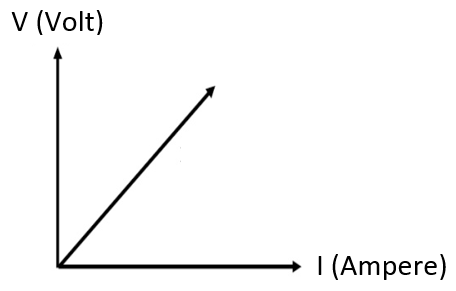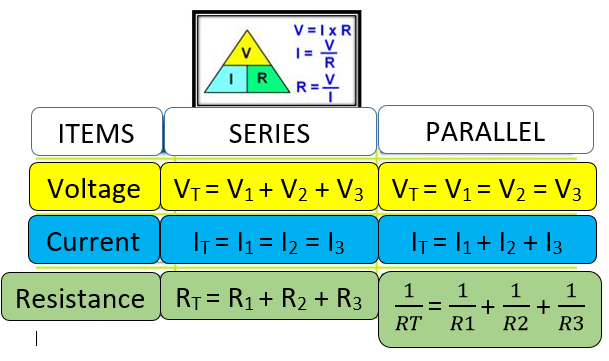| |
|
|
| |
| |
| |
Ohm's law |
|
| |
Potential difference flowing through a conductor is directly proportional to the electric current when the temperature and other physical properties are kept constant.
\(V = I\times R\)
|
|
| |
|
|
|
|
| |
|
If Ohm's law is obeyed, the graph against it or otherwise is a straight line as follows:

|
| |
| |
Ohmic conductor |
|
| |
Conductor which obeys Ohm's Law (Resistance constant)
Example: Constantan wire
|
|
| |
|
|
|
|
| |
| |
Non-ohmic conductor |
|
| |
Conductor which does not obeys Ohm's Law (Resistance constant)
Example: Filament bulb
|
|
| |
|
|
|
|
| |
| |
 |
| |
| |
 |
| |
| |
| |
Resistance of wire |
|
| |
\(R=\dfrac{\rho\,l}{A}\) |
|
| |
|
|
|
|
| |
|
Factors that affect the resistance of a wire
|
- Length of wire, \(l\)
- \(l\) increase, \(R\) increase
- cross sectional area of wire, \(A\)
- \(A\) increase, \(R\) decrease
- resistivity of the wire, \(\rho\)
- \(\rho\) increase, \(R\) increase
|
| |
| |
| |
Resistivity of a conductor, \(\rho\) |
|
| |
- a measure of a conductor's ability to oppose the flow of electric current
- unit is ohm-meter
- depends on the temperature and the nature of the conductor material
|
|
| |
|
|
|
|
| |
| |